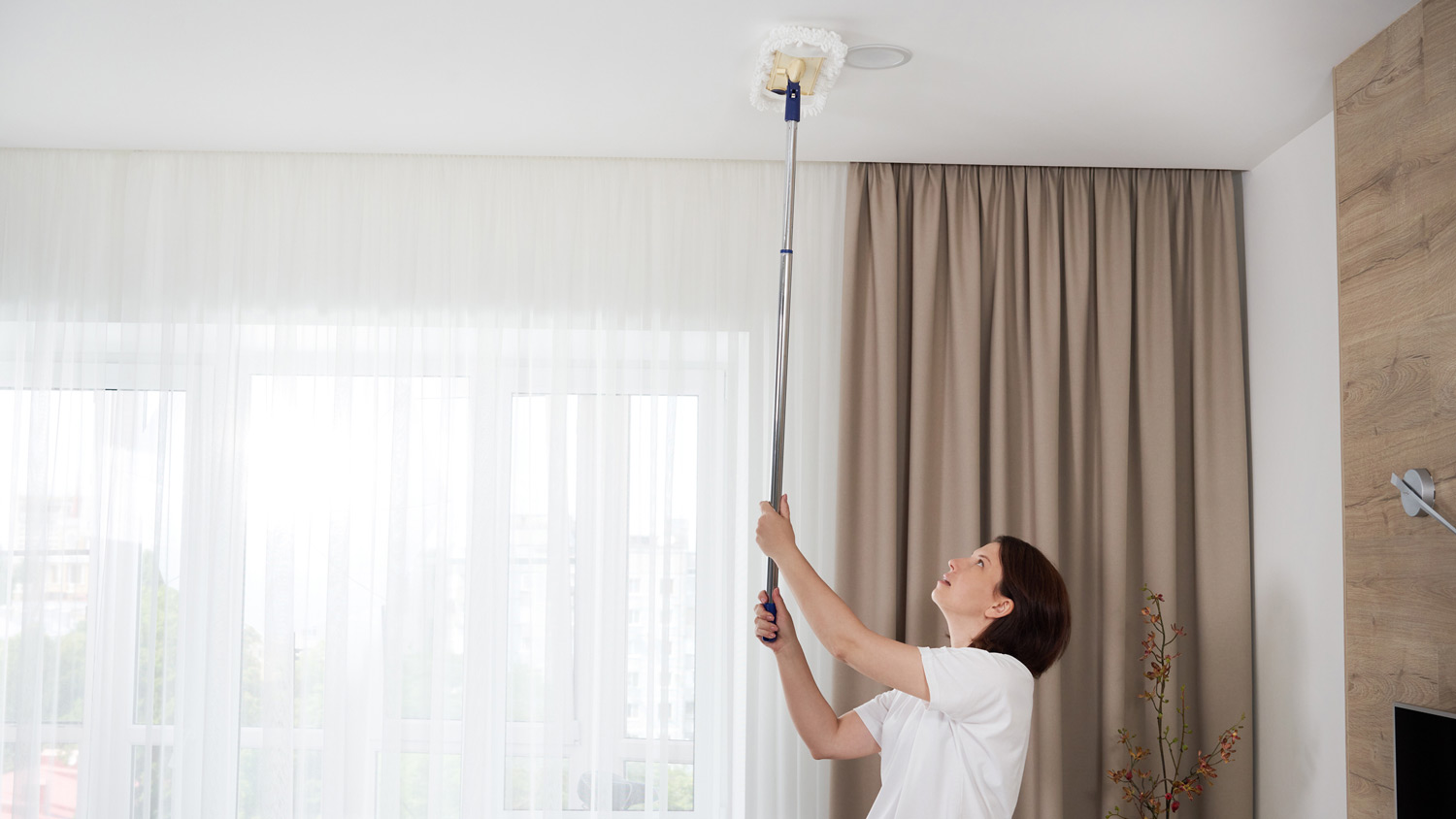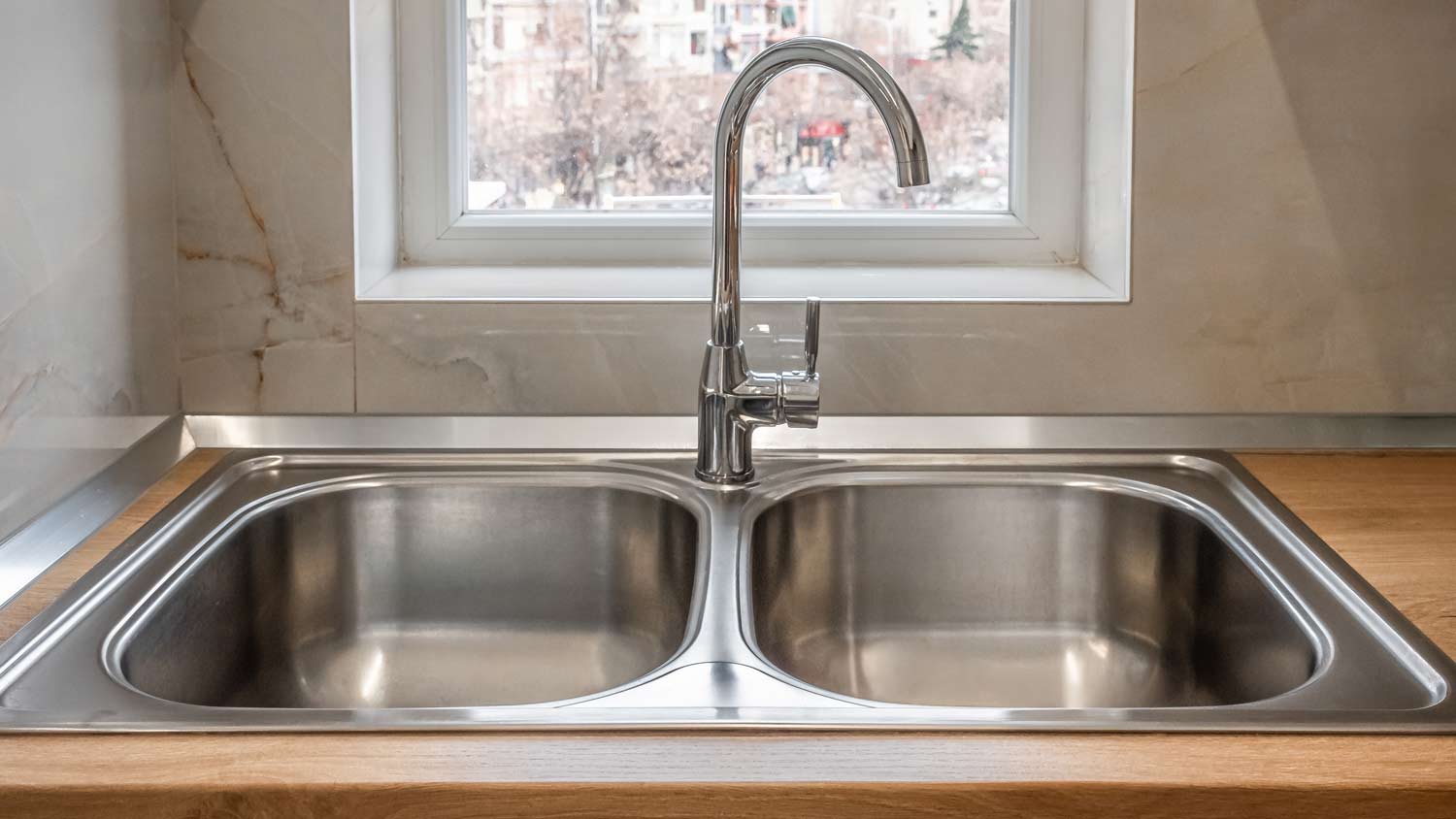
Garage clean-out costs vary considerably depending on the garage size, the waste type and amount, and how much work you do yourself.
Get back on track by making sure your door's tracks are clean and smooth


Opening the sliding door to your back patio shouldn't incite an epic game of tug-of-war. Patio sliding doors get stuck for many reasons, but a dirty or debris-filled track is one of the most common culprits. But rest assured, a sticky sliding door track doesn't mean you need to repair or replace the door. Cleaning your patio door tracks may be all that's needed to run smoothly once again.
If it's been a minute since you've cleaned your patio door track, take a moment to assess how dirty the area is. Basic cleaning with soap and water will do for just a bit of dirt and grime. For deeper cleans, you may use something more abrasive like baking soda and vinegar.
Either way, begin by sliding the door all the way open to one side and inspect the track for dents, loose screws, or misaligned wheels. Close your door and inspect the other side of the track for the same red flags. Also take note if you recently had leaks through your sliding doors or issues with the locking mechanisms. Each of these could be signs you need to perform a deeper clean or call your local door specialist.
Break out the handheld vacuum or the thin attachment for your regular vacuum. Begin by vacuuming up any loose debris in both the open section of the track and the area around the stationary side of your door. Be sure to vacuum on both sides of the stationary door since dirt, rocks, and stones can easily build up over time outdoors.
"Vacuuming the track is the most efficient way to remove the larger loose debris before wiping down the track with your preferred solution," says Asya Biddle, Angi Expert Review Board member and manager of The Dustbusters, a family-owned and operated janitorial company in Williamsport, PA.

Wipe the inside and outside of your track with a sponge damp with water and dish soap. You can even score the inside of your sponge so it fits perfectly over the multiple tracks and into the small crevices. Remember to get into the track around the stationary side of the track as well. If your tracks are relatively clean, this may be all you need to do before skipping to step eight.
Let the area dry thoroughly before adding more cleaning solution or jumping to the silicone lubricant. This is also a good time to determine if you need a deeper clean. While it’s drying, examine the door track to see if there are any spots you missed or stubborn areas of grime.
If you spot any particularly dirty areas still lingering, no worries. You simply need to tackle those spots with a tougher cleaning solution. You can break up harder-to-reach grime with a coating of baking soda and vinegar solution. For this step, begin by sprinkling a thin layer of baking soda into the track on both sides of the door.
Next, combine equal parts white vinegar and water in a clean spray bottle. Spray a light layer on the baking soda and let the reaction do its thing for about a minute. You’ll see some white fizzing action at the site where you sprayed. These bubbles will break up any stubborn grime hiding in the track and under the stationary door.

Now, use your sponge or a toothbrush to get into the small dirty spaces revealed by the baking soda and vinegar. If you get inspired, you can use the small toothbrush bristles for grime on the base of the door and the closing and locking mechanisms as well. Take your time with this step, as it’s easy to miss a few spots here and there. Be thorough with your scrubbing, and go over stubborn areas a few times.
Now for the satisfying part—the rinse. Use clean cold water to rinse the track and door to remove the cleaning solution. Keep your door open to allow it to fully air dry. Use your towel to dry off the water, and clean up any wet areas around the door.
You'll find a range of brands that sell silicone lubricants specifically for sliding glass door tracks. Be sure to read the instructions on how to choose the best type for your door's material and structure. The bottle will also note how and when to apply the lubricant for safe use.

Slide the door back and forth over the newly cleaned door and note if it catches in a specific spot. The clean track should allow you to spot any larger issues getting in the way and may inspire you to clean your sliding glass doors while you're at it.
Door repairs cost between $40 and $120 an hour depending on the extent of the issue. In this case, a simple cleaning may not be worth the price of professional help unless you need other repairs. You can also call in a professional cleaner for deep-cleaning services, or for the door itself. Keep in mind that cleaning services cost between $30 and $50 an hour, and the company may charge a minimum fee for the visit.
The best way to clean a sliding door track is likely the DIY route. You have nearly all you need under the sink or in the pantry and it only takes about 30 minutes of elbow grease and another 30 minutes of dry time to get it done.
From average costs to expert advice, get all the answers you need to get your job done.

Garage clean-out costs vary considerably depending on the garage size, the waste type and amount, and how much work you do yourself.

Hiring a house cleaner frees up your schedule and keeps your home spotless. The cost to hire a house cleaner depends on the size of your house, your schedule, and who you hire. Use this guide to understand typical house cleaning prices better.

Discover the average acoustic ceiling cleaning cost, what affects pricing, and how to save. Get expert tips to budget for your acoustic ceiling cleaning project.

Sink looking worse for the wear? This guide will break down why your brand new stainless steel sink is rusting and what you can do to fix it.

For homeowners wondering: can I hire someone to clean out my garage? Here are the best professionals to work with based on your project’s unique needs.

Does your water taste off? It may be time to clean your water dispenser. Use this guide to learn how to clean a fridge water dispenser.